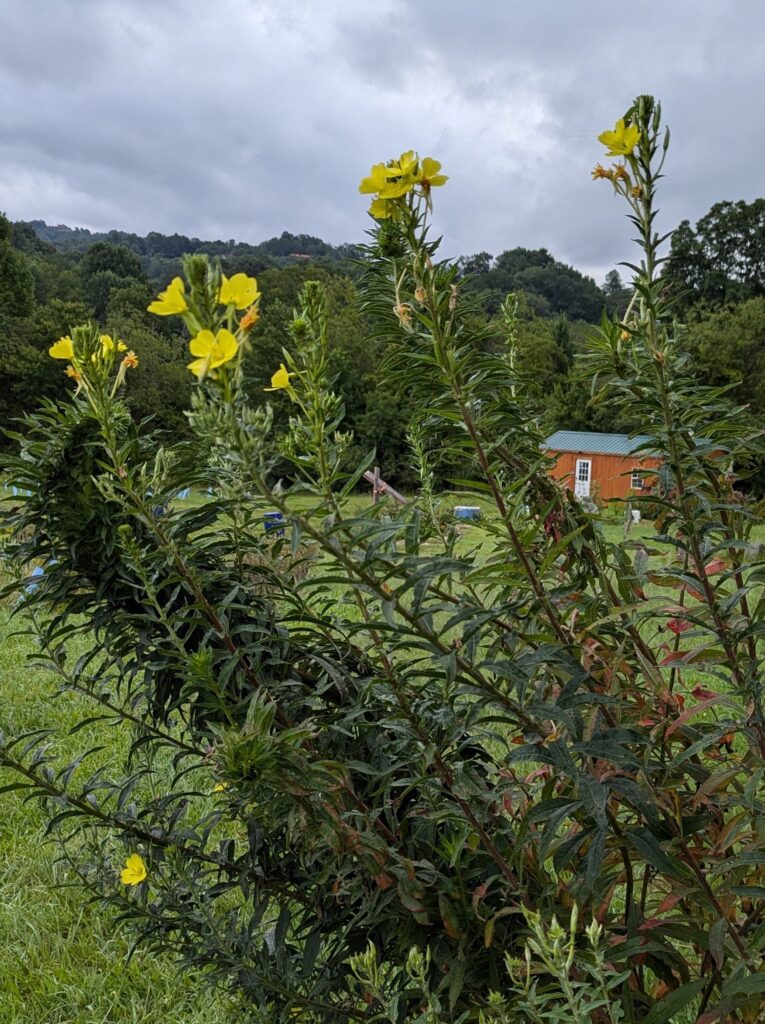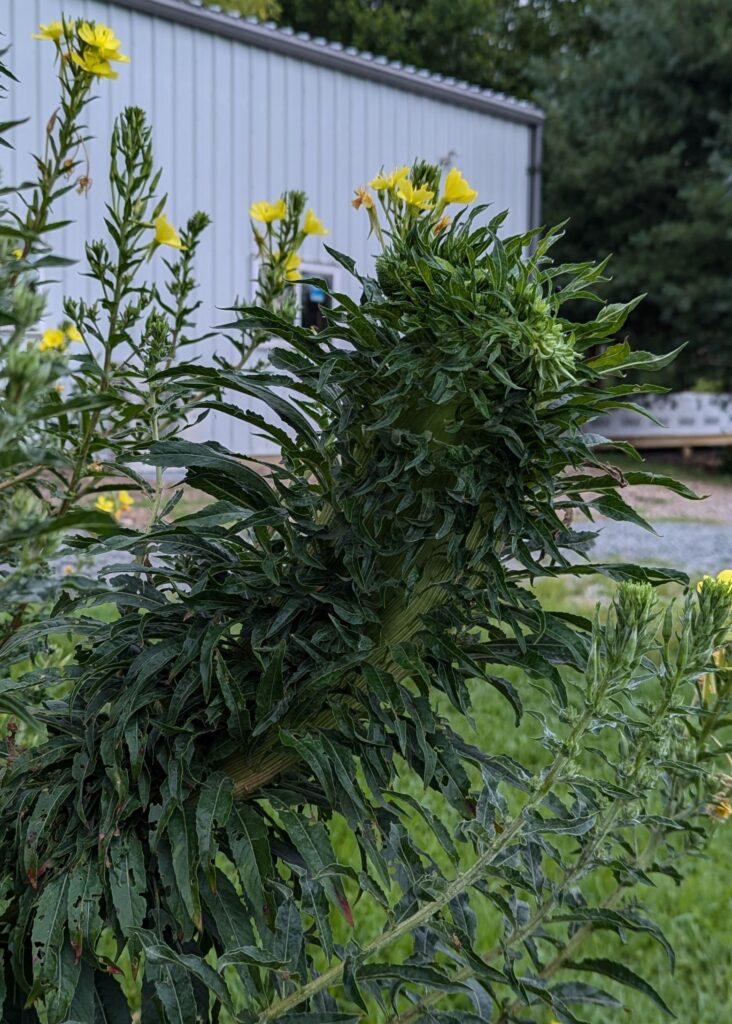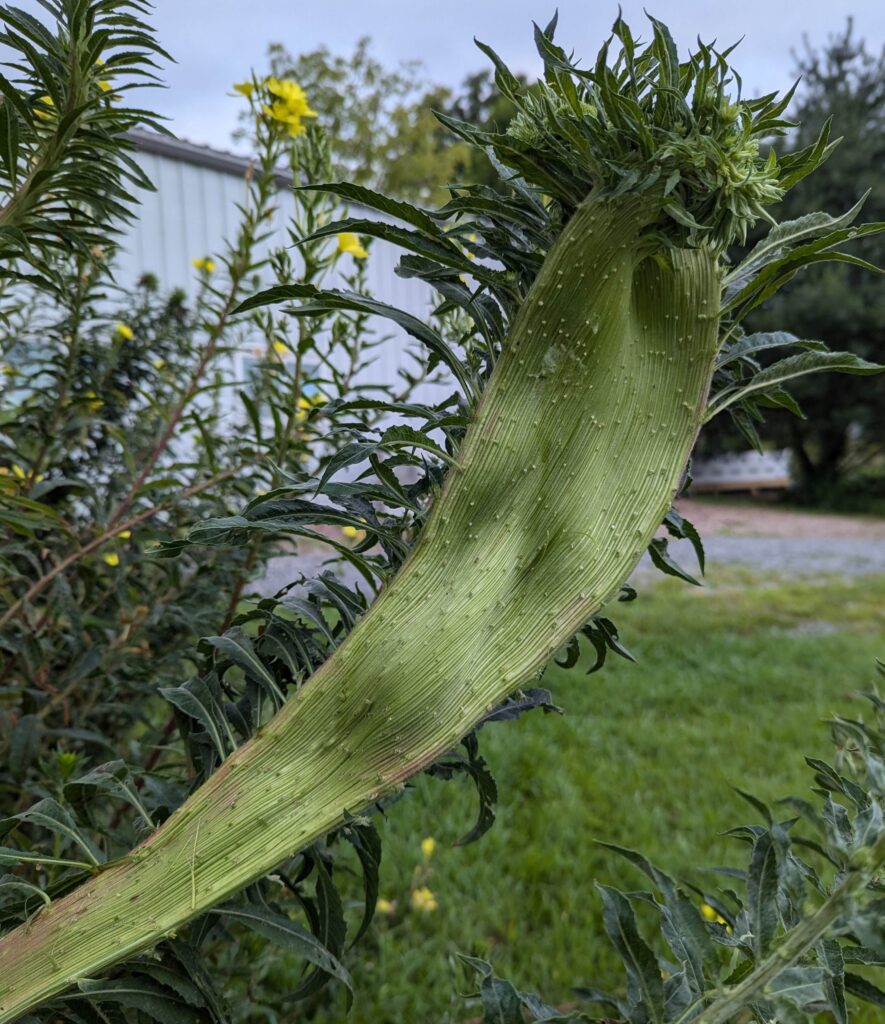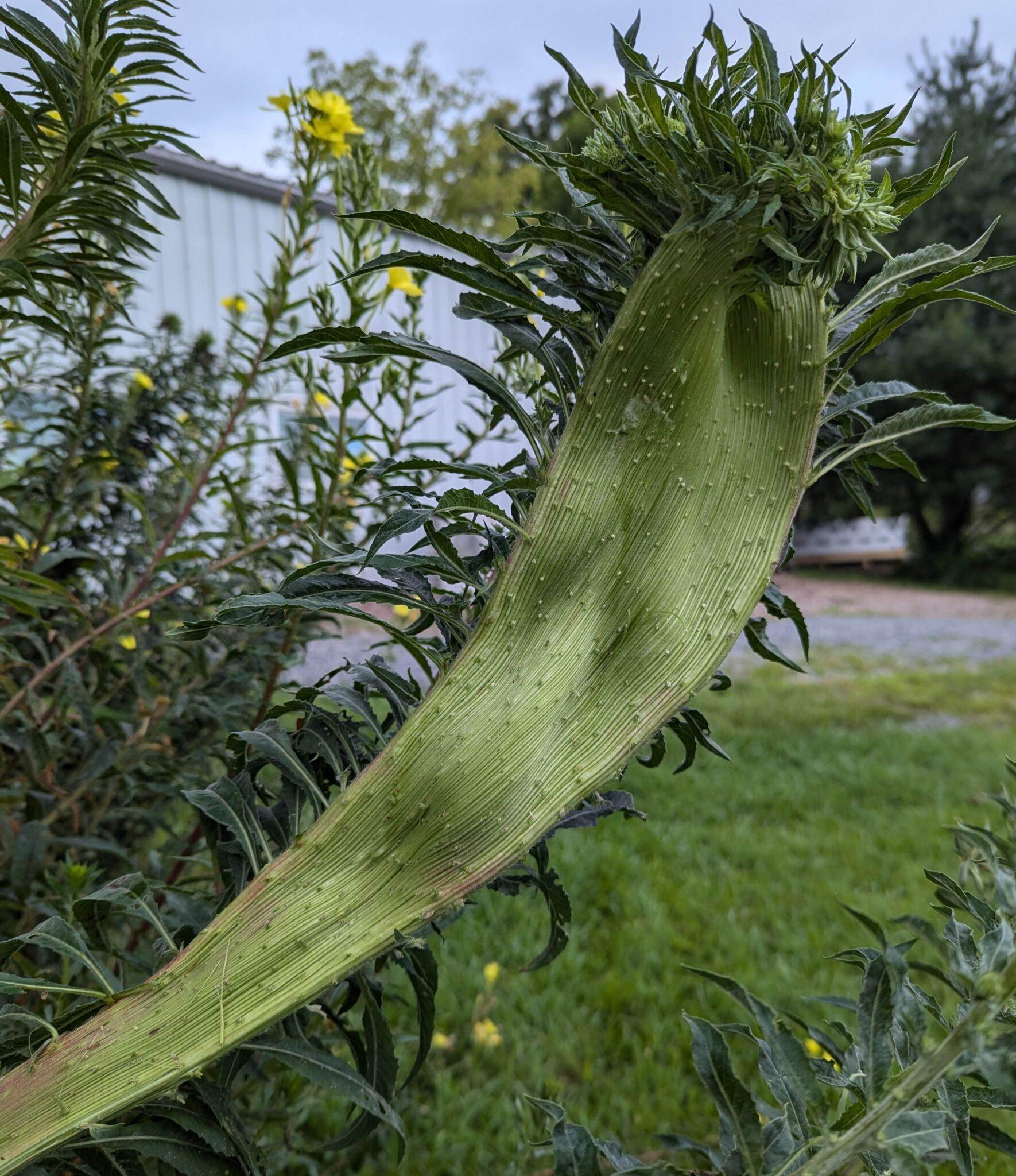Fasciation is a type of mutated plant growth that causes stems, roots, fruits, and flowers to develop abnormally. Fasciation is a condition, albeit rare, in plants that causes the stems to appear as flattened and elongated, fan-like; or the flower heads present as multiple flowers fused together. Weird, right? Yet the stuff in which we gardeners are fascinated!
Fasciation can occur in about any plant. Everything from strawberries to grapes will produce this unusual growth given the right circumstances. These abnormalities are propagated by the gardener, so they have persisted in the trade, therefore I would say that the serious gardener is very fascinated with fasciation! Most now agree that fasciation occurs as a mutation in a single cell of the meristem. This cell divides and gives rise to other cells, the peripheral zone. Here the number of mutated cells increases and the growing point differentiates into a mature meristem with nodes, leaves and flowers. In effect, an adjacent multiplicity!
A number of factors can cause the mutation to occur. Fasciation has been experimentally produced using X-rays or chemical mutagens such as colchicine. In nature, it has been attributed to infection with various disease agents or insect infestation. It’s likely that the association of insects with fasciation is due to their role as a vector. Grafting or cutting propagation is the usual means horticulturists use to propagate these fasciated plants.
Some plants, notably cockscomb, transmit fasciation by seed. The fasciated growth is probably caused by a permanent change in the genes of the celosia, possibly triggered by a phytoplasma in the distant past. Pretty definitive, don’t you think?
Of the disease-causing agents, the most commonly associated pathogen are phytoplasmas, which are somewhere in between a bacterium and viral particle in size. Small, you know, that is why they are referred to as Mollicutes!
It can manifest in many forms, including:
- Flattened: stems appear fan-shaped, with a dense tuft of growth at the end called a witches’ broom
- Twisted: leaves appear pig-tailed or twisted and thickened
- Coiled: stems coil like a snail shell
- Enlarged: stems appear enlarged, and flower heads look as if compressed together
Fasciation can be caused by a number of factors, including:
- Genetic mutations
- Viral infections
- The bacterium, Rhodococcus fascians
- Physical damage from frost, animals, chemicals, or mechanical injury
- Hormonal imbalances
- Garden conditions that favor rapid growth
I love lists like these, they are really saying “we don’t really know what exactly is causing the condition!”
Common Plants with Fasciated Growth
- Cockscomb celosia: Grown for its unusual ornamental appearance
- Japanese fantail willow: Also known as Salix udensis ‘Sekka’
Cockscomb celosia (Celosia argentea) ‘Cristata Group’ has a terminal inflorescence of erect, flattened, broad, cristate cockscombs. It is an easily cultivated annual. Plant it in full sun with rich, moist, well-drained soil. However, the plant tolerates dry porous soils and thrives in heat and humidity. Plant it in the flower border, as an edging plant, or in the cut flower garden. Celosia species freely reseed. The fasciated growth was likely caused by a change in the genes of the celosia, possibly incited by a phytoplasma infection.
The Japanese fantail willow is a large shrub/small tree, this vigorous ornamental willow is known for its curiously flattened, recurved stems that can be used in floral arrangements. It can be grown in a range of soil types. It is however, short-lived.
Studying an Evening Primrose
The Evening Primrose (Oenothera biennis), a biennial; the first year of growth it forms a rosette of foliage, in the second year it sends up a stalk to flower. The blooms are yellow, flowering from late spring to late summer. It is most floriferous in the evening, hence the common name. It is attractive to moths, butterflies and bees.

I was indeed fascinated when I discovered this dense growth in the plant:

When I pulled off the excess foliage, this is what I discovered:

It is my sincerest hope that:
- This article was of interest to you
- That you learned something new
- That you find that our world is indeed fascinating
- That you have or are becoming fascinated in what you might discover in the world of plants around you!
In my next blog, we’ll discuss some common garden pests that look very similar…but are actually quite different!
~ Signing off for now, Joe

